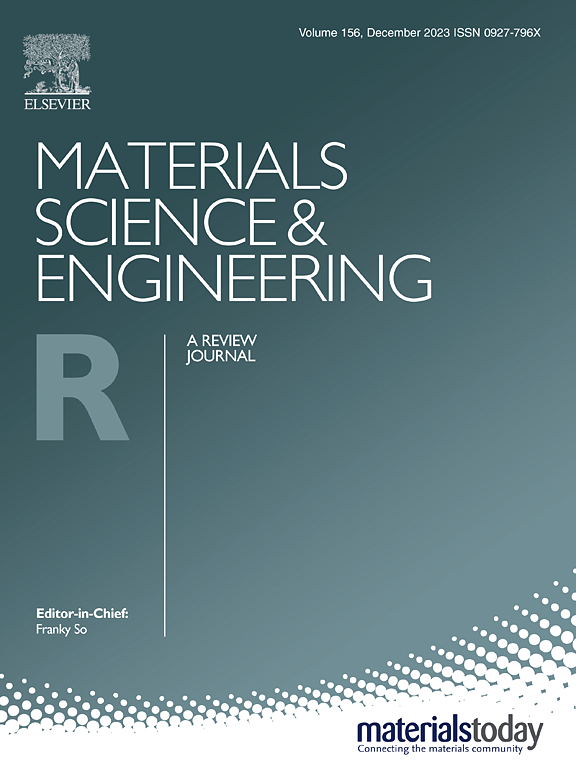一体化自供电可穿戴生物传感器系统
IF 31.6
1区 材料科学
Q1 MATERIALS SCIENCE, MULTIDISCIPLINARY
引用次数: 0
摘要
可穿戴式生物传感器通过对生物信号的原位采集、实时处理和连续传输,为未来的精准医疗和个性化健康监测提供了便利。自供电技术为实现上述目标提供了有效的策略,但使整个生物电子系统更加复杂。最终,材料工程,小型化和性能增强的挑战汇聚到自供电可穿戴生物传感器系统的一体化工程中。使能量模块的输出功率与信号模块的功耗要求相匹配,是实现一体化设计的基本前提。本文以功率为切入点,对自供电可穿戴生物传感器的机理、性能范围、增强策略、应用实例及未来展望进行了全面的分析和总结。我们回顾了目前自供电技术的原理、工程策略和能量收集、管理和存储能力,以确定输出功率范围和提高性能的方法。接下来,我们讨论并比较了信号采集、处理和传输的策略和机制,重点讨论了每个模块的性能、尺寸、可穿戴性和增强策略。最重要的是,我们总结了系统中四种具有代表性的一体化工程策略,包括设计原则、基础材料、目标部件、集成水平、优缺点。最后,我们概述了六个模块的关键挑战和潜在解决方案,为智能和网络化传感做准备。本文章由计算机程序翻译,如有差异,请以英文原文为准。
All-in-one self-powered wearable biosensors systems
Wearable biosensors capable of long-term operation facilitate future precision medicine and personalized health monitoring by in-situ acquisition, real-time processing, and continuous transmission of biological signals. Self-powered technologies provide effective strategies to achieve the above goals, but make the entire bioelectronic system more complex. Ultimately, challenges of material engineering, miniaturization, and performance enhancement converge into the all-in-one engineering of self-powered wearable biosensor systems. Matching the power output of the energy module with the power consumption requirements of the signal module is the basic prerequisite for achieving all-in-one design. This review takes power as the entry point to comprehensively analyze and summarize the mechanisms, performance ranges, enhancement strategies, application examples, and future prospects of self-powered wearable biosensors. We review the principles, engineering strategies, and capabilities in energy collection, management, and storage of current self-powered technologies to determine the output power range and methods for performance enhancement. Next, we discuss and compare the strategies and mechanisms for signal acquisition, processing, and transmission, focusing on the performance, size, wearability and enhancement strategies of each module. Most importantly, we summarize the four representative all-in-one engineering strategies in the system, covering design principles, basic materials, targeted parts, integration levels, advantages and disadvantages. Finally, we outline key challenges and potential solutions for six modules in preparation for intelligent and networked sensing.
求助全文
通过发布文献求助,成功后即可免费获取论文全文。
去求助
来源期刊

Materials Science and Engineering: R: Reports
工程技术-材料科学:综合
CiteScore
60.50
自引率
0.30%
发文量
19
审稿时长
34 days
期刊介绍:
Materials Science & Engineering R: Reports is a journal that covers a wide range of topics in the field of materials science and engineering. It publishes both experimental and theoretical research papers, providing background information and critical assessments on various topics. The journal aims to publish high-quality and novel research papers and reviews.
The subject areas covered by the journal include Materials Science (General), Electronic Materials, Optical Materials, and Magnetic Materials. In addition to regular issues, the journal also publishes special issues on key themes in the field of materials science, including Energy Materials, Materials for Health, Materials Discovery, Innovation for High Value Manufacturing, and Sustainable Materials development.
 求助内容:
求助内容: 应助结果提醒方式:
应助结果提醒方式:


